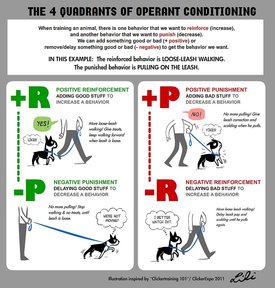Spring Canine for Beginners
Spring Canine for Beginners
Blog Article
How Spring Canine can Save You Time, Stress, and Money.
Table of ContentsThe Facts About Spring Canine RevealedSome Ideas on Spring Canine You Should Know7 Easy Facts About Spring Canine DescribedSpring Canine Can Be Fun For AnyoneAll About Spring Canine
Pets in the wild live by the rules of the pack. These guidelines serve them well because situation yet we have actually asked them to live with us and our policies have to currently be adhered to. It is definitely feasible to have a well-trained pet that is still a pet and we must take care to train them as pets and not young children.There are a couple of canine training basics to think about. The goal of training is to have a genteel pet who is confident and kicked back.
Canines can start training as very early as three months. Before that, their emphasis is unsatisfactory. Educating a young puppy can be a challenge at first but if you begin with essentials such as "Sit!" and "Remain," your dog will certainly learn promptly. Older dogs can definitely be trained and though they may be slower with the uptake, their calmer disposition makes training easier. Though it is useful to supplement with books and videos, your canine must attend a minimum of a basic obedience class.
Spring Canine - Truths
This will unwind your canine and provide him confidence. As an instructor, be consistent and establish a training regimen for you and your pet dog.
It's far better to do 2 fifteen minute sessions each day than one half-hour session. The majority of obedience training methods today utilize positive reinforcement. Some use it exclusively while others incorporate it with correction. Picking a method depends upon which technique you are most comfy with, keeping in mind your pet dog's personality.
6 Simple Techniques For Spring Canine
Though the basic commands are comparable among various training methods, one technique might be better for your canine than one more. A timid Yorkie is much less most likely to respond well to a restorative technique while a bull-headed Pit Bull will possibly require a combo of favorable and rehabilitative reinforcement. This approach uses physical improvements to educate a dog. If you inform your pet dog to sit and he remains standing, you might provide a mild jerk on his collar or choke chain while pressing down his rump.
This approach is considered to be dated by several contemporary instructors yet you'll find that some dogs (like that bull-headed Pit Bull) may react to this after stopping working with positive reinforcement training. This is one of the most popular recent kinds of pet training and was introduced by Karen Pryor.

The Greatest Guide To Spring Canine
This is another favorable reinforcement strategy however the incentive is not the association with the clicker, yet some type of benefit. When you give the benefit, you need to praise your dog in a high pitched encouraging voice.

This simulates what his mommy would have done in the wild. This technique requires some research into the actions of canines yet it can create an extremely limited bond between you.
You could likewise be interested in discovering the cognitive features of canines. There are publications on the subject and Cognitive Pooch Centers around the nation. This will aid you understand exactly how your pet thinks and will make training easier. Keep in mind that one of the most vital aspects are to be calm and regular and try to have some enjoyable, as well! Featured Image Credit rating: dimitrisvetsikas1969, Pixabay.
Spring Canine - An Overview
When bringing a brand-new pet dog home, it may be overwhelming to consider training. https://springcanine.blog.ss-blog.jp/. There are helpful hints a few different kinds of training approaches to attempt, but which one is best for you and your pet? Here are just a few of the different kinds of canine training approaches: In positive support training, the fitness instructor awards the pet dog completely behavior
Fitness instructors will then neglect bad habits or hold back treats when a canine doesn't act well. * (Amazon Affiliate Link) to signal quickly when a canine has done something excellent. Foster Cat.
Report this page